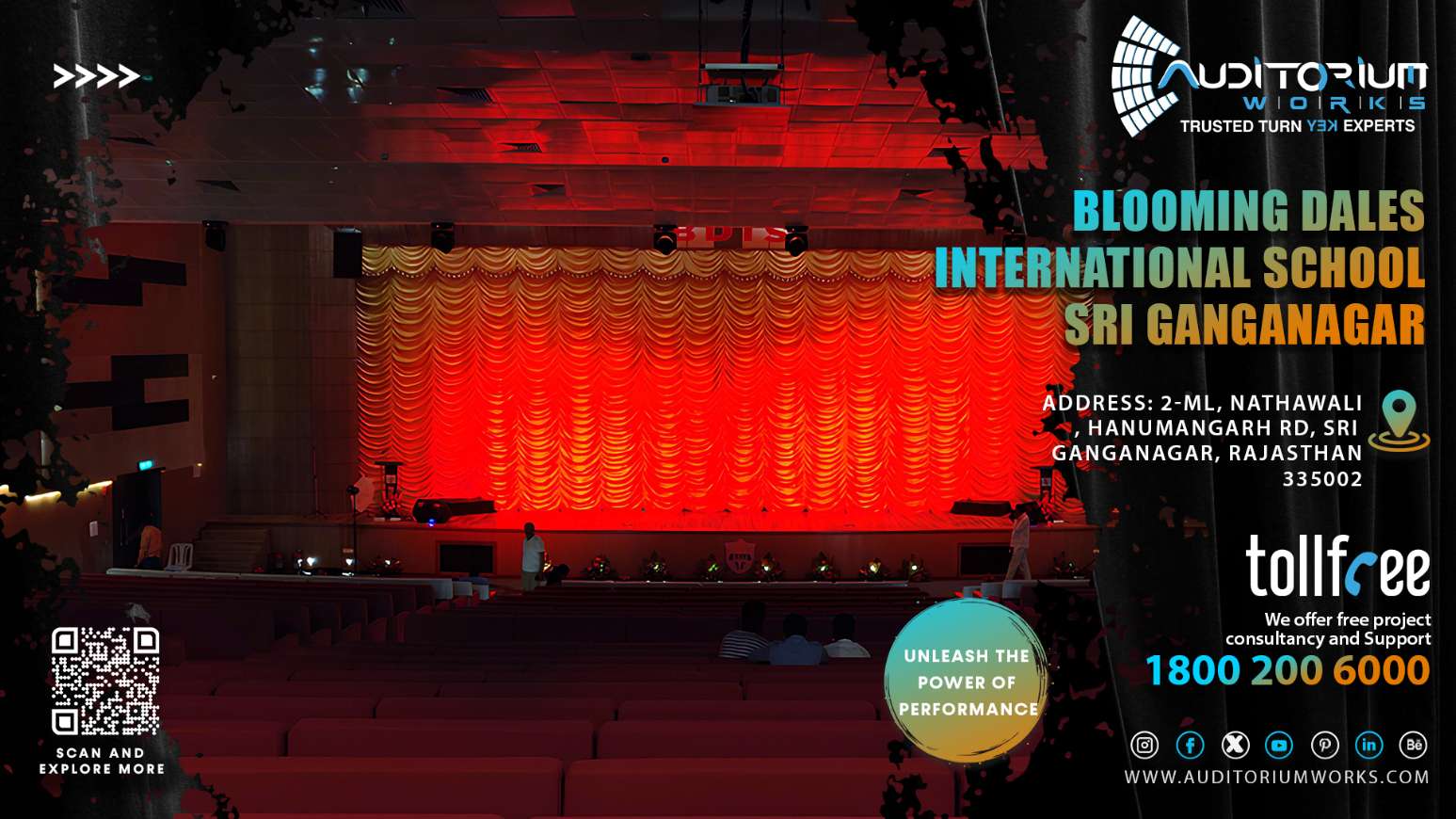Eliminating Echoes: A Guide to Effective Auditorium Acoustic Treatment
Auditoriums, grand spaces designed for performance and presentations, often suffer from a common ailment: unwanted echoes and reverberation. These acoustic imperfections can significantly degrade the listener experience, muddying speech clarity and distorting musical performances. Transforming an auditorium into a space with exceptional sound quality requires a comprehensive approach to acoustic treatment. This guide outlines the key principles and techniques for achieving optimal acoustics in your auditorium.
Understanding Auditorium Acoustics
Achieving optimal auditorium acoustics isn’t simply about absorbing all sound. It’s about striking a delicate balance between absorption, reflection, and diffusion to create a pleasant and engaging listening environment.
- Reverberation Time (RT60): This crucial metric measures how long it takes for sound to decay by 60 decibels after the source stops. The ideal RT60 varies depending on the auditorium’s primary use. For speech-heavy environments, a shorter RT60 is preferred to enhance clarity, while musical performances often benefit from a longer RT60 to add richness and fullness.
- Echoes: Distinct, delayed reflections that are perceived as separate from the original sound. They are disruptive and need to be addressed.
- Flutter Echoes: Rapid, repetitive echoes occurring between parallel reflective surfaces. They create a buzzing or ringing sound.
- Sound Absorption: Materials that convert sound energy into heat, reducing reflections and reverberation.
- Sound Diffusion: Surfaces that scatter sound waves in multiple directions, creating a more even and natural sound field.
- Sound Isolation: Preventing external noise from entering the auditorium and internal noise from escaping.
Identifying Acoustic Problem Areas
Before implementing any acoustic treatments, it’s crucial to conduct a thorough acoustic assessment of the auditorium. This typically involves:
- Listening Tests: Walking around the auditorium while someone speaks or plays music allows you to subjectively identify areas with excessive echoes, dead spots, or uneven sound distribution.
- Impulse Response Measurements: Using specialized equipment to generate an impulse sound and recording the resulting sound reflections, allowing for precise analysis of RT60 and other acoustic parameters.
- Room Acoustic Modeling Software: Computer simulations can predict the acoustic behavior of the auditorium based on its geometry and material properties, aiding in the design of effective treatment strategies.
Common problem areas often include:
- Large, Flat Surfaces: Walls, ceilings, and floors can act as mirrors, reflecting sound waves and creating echoes.
- Corners: Concave corners tend to focus sound energy, leading to hotspots of reverberation.
- Balconies: Undersides of balconies can create sound shadows, leading to uneven sound distribution in certain areas.
- Stage Area: Reflections from the stage can interfere with the sound reaching the audience.
Acoustic Treatment Solutions: A Comprehensive Toolkit
A variety of acoustic treatment products are available to address specific acoustic problems in auditoriums:
Sound Absorbing Panels
These panels, typically made of fiberglass, mineral wool, or foam, are designed to absorb sound energy and reduce reverberation. They are available in various sizes, shapes, and fabric coverings to blend seamlessly with the auditorium’s aesthetics. Strategically placed on walls and ceilings, they can effectively control reflections and improve speech intelligibility.
Acoustic Diffusers
Unlike absorbers, diffusers scatter sound waves in multiple directions, creating a more even and natural sound field. They are particularly useful in large auditoriums where simply absorbing all sound can lead to a “dead” or unnatural acoustic environment. Common types of diffusers include quadratic residue diffusers (QRDs) and skyline diffusers.
Bass Traps
Low-frequency sound waves are particularly difficult to control. Bass traps are designed to absorb these frequencies, preventing the buildup of unwanted resonances and improving the clarity of bass instruments and vocals. They are typically placed in corners or along walls where low-frequency sound tends to accumulate.
Acoustic Baffles and Clouds
These suspended elements are particularly effective in large auditoriums with high ceilings. Baffles are hung vertically, while clouds are suspended horizontally. Both can absorb sound and reduce reverberation without blocking light or airflow.
Acoustic Curtains
Heavy, sound-absorbing curtains can be used to control reverberation and block sound transmission. They are particularly useful in areas where flexibility is required, such as stage backdrops or dividing walls.
Resonators
Helmholtz resonators are tuned to absorb specific frequencies. They are often used to address problematic resonances within the auditorium. Membrane absorbers work on a similar principle, using a flexible membrane to absorb low frequencies.
Strategic Implementation: Optimizing Placement and Coverage
The effectiveness of acoustic treatment depends not only on the type of materials used but also on their strategic placement and coverage.
- First Reflection Points: These are the points on the walls and ceiling where sound waves from the speakers first reflect towards the listener. Treating these points with absorbers or diffusers can significantly improve sound clarity.
- Rear Wall Treatment: The rear wall of the auditorium is often a major source of reflections. Treating this area with absorbers or diffusers can help prevent echoes and improve overall sound quality.
- Ceiling Treatment: In auditoriums with high ceilings, treating the ceiling with absorbers or clouds can effectively reduce reverberation.
- Corner Treatment: Placing bass traps in corners can help control low-frequency resonances and improve bass clarity.
- Stage Acoustics: The stage area should be treated to minimize reflections and ensure that the sound reaching the audience is clear and balanced. This may involve using absorbers, diffusers, or reflectors to direct sound towards the audience.
Beyond Treatment: Considering Design and Construction
While acoustic treatment is essential for improving the sound quality of an auditorium, it’s also important to consider the acoustic properties of the building itself during the design and construction phases.
- Room Shape: Avoid parallel walls, which can create flutter echoes. Non-parallel walls or angled surfaces can help diffuse sound.
- Material Selection: Choose building materials with good sound-absorbing properties, such as textured surfaces, porous materials, and resilient flooring.
- Sound Isolation: Implement strategies to minimize external noise intrusion, such as using soundproof windows and doors, and isolating mechanical equipment.
- HVAC System: Design the HVAC system to minimize noise and vibration.
Conclusion: Achieving Acoustic Excellence
Effective acoustic treatment is paramount for creating an auditorium that delivers exceptional sound quality. By understanding the principles of auditorium acoustics, identifying problem areas, and strategically implementing appropriate treatment solutions, you can transform a space plagued by echoes and reverberation into an environment that enhances speech intelligibility, musical performances, and overall listener experience. Consulting with experienced acoustic consultants is invaluable to ensure that the chosen solutions are tailored to the specific needs of your auditorium. The investment in proper acoustic treatment will undoubtedly pay dividends in the form of a more enjoyable and engaging experience for both performers and audience members.



